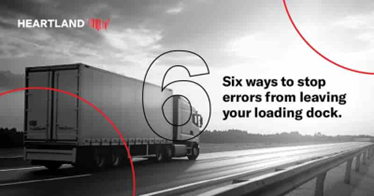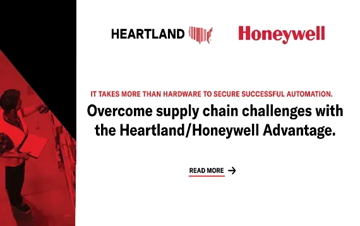
Full Truckload or Less-Than-Truckload: Which one’s best for you?
Jan 31, 2024
Fuel prices have been fluctuating and challenging logistic teams for a long time. Last year’s research registered a 20% increase in diesel fuel within a three-month span. Backtrack a few years, the 2020 pandemic dealt a hefty blow in fuel costs, leading to all-time low prices only to be replaced later by record-breaking spikes following the Russian-Ukrainian conflict. Recent studies estimate prices have once again increased by 16% last year, affecting shipping ETAs, product prices, and product availability. Fuel expenses generally constitute a fourth of the total costs of operating a single vehicle. To stay ahead of fuel changes, businesses have sought to adjust routing and nearshore distribution. However, as diversification continues to restructure supply chains, ground shipping teams must also consider optimizing truck loading.
Understanding the difference between Full Truckload and Less-than-Truckload Shipping
As the name implies, Full Truckload (FTL) shipping involves transporting one large order in a single truck trailer, typically for shipments weighing over 10,000 lbs. When it comes to shipping, dedicated trucks offer several advantages over other shipping methods, such as:
- Faster Delivery Times – FTL significantly reduces transit times by prioritizing your cargo and minimizing stops and detours along the way. STREAMLINED ROUTING allows your deliveries to arrive faster, improving customer satisfaction and maximizing product availability.
- Maximized Product Security – Since your goods are the only items onboard, the risk of damage or loss due to handling by multiple entities is greatly reduced. Less handling translates to lower chances of product dings, scratches, or breakage, saving you time, money, and headaches in the long run. This can give you peace of mind and help ensure that your products arrive at their destination in the same quality condition they were in when they left.
- Flexible Scheduling – Dedicated trucks also offer flexibility in terms of routing and scheduling. You have complete control over when and where your shipments go, so you can cater to specific delivery needs and make sure your products arrive exactly when and where they're needed.
On the other side of the spectrum, Less-than-Truckload (LTL) shipping provides a more inexpensive option for shipping as multiple orders are fitted into a single truck trailer. As a result, LTL freight equips distributors with:
- Lower Transportation Costs – Instead of paying the full price for a truck trailer, logistic teams can choose to combine orders with like products, diminishing costs. To do this, warehouses must track inventory status and composition to group like materials and prevent spoilage and/or breakage.
- Sustainable Shipping – Studies estimate freight companies are responsible for at least 8% of total global greenhouse gas emissions, an amount projected to double by 2050 if changes aren’t implemented. LTL maximizes truck space, reducing the number of deployed trucks and emissions. With sustainability becoming crucial for consumers, distributors may reduce their carbon footprint with optimized truck loading.
- Facilitated Diversification: Distributors seeking to diversify their transportation providers can do so with more ease when employing an LTL shipping model. By leveraging multiple carriers, distributors may prevent stockouts and shortages. However, multiple stops may lengthen delivery times.
Related: See how automation empowers transportation and logistics teams to maximize truck space.
Whichever method you choose, inventory visibility is key
Without accurate and up-to-date inventory information, it can be difficult to determine how much space is needed to transport goods, leading to an inefficient use of available space. Furthermore, inventory tracking ensures that the correct products are loaded in the right quantities, reducing the risk of errors so customer orders are fulfilled accurately. By integrating a digitized tracking system, distributors can also...
- Make sure the weight limit of the truck is not exceeded
- Prevent product damage from overstocking
- Mitigate accidents with proper loading assistance
- Accelerate replenishment with real-time shipping visibility
In other words, modernized visibility solutions ultimately empower better loading practices and diminish operational costs by maximizing space and monitoring product status. To accomplish this, solution providers typically recommend building a custom visibility system leveraging:
- Transportation Management Systems (TMS): These software platforms provide a centralized approach to managing shipment planning, routing, and tracking, which in turn helps to optimize both full truckload (FTL) and less-than-truckload (LTL) operations. Ergonomic mobile computers can connect your WMS and TMS for seamless communication and to record tracking analytics, reduce shipping costs, and improve delivery times.
Related: Check out six loading dock solutions currently empowering logistic teams.
- Warehouse Robotics – Automated Mobile Robots (AMRs) expedite loading and unloading without straining your workforce. Advanced robotic technologies have proven to be highly efficient in minimizing handling times as well as maximizing worker safety since they are engineered to lift and move heavy items with ease.
- Electronic Logging Devices – Federal regulations in the United States require all commercial carriers engaged in interstate commerce to use Electronic Logging Devices (ELDs) for tracking driver hours of service and vehicle location data. Besides preventing driver fatigue, ELDs also provide carriers with valuable data to optimize route planning, reduce fuel costs, and improve overall efficiency. By automating the data collection for both drivers and vehicle locations, ELDs help carriers save time, avoid costly non-compliance fines, and estimate arrival times accurately in your whole fleet.
- Temperature Sensors - Equipped with temperature sensors, companies monitor the status of their products in real-time, ensuring that they are stored and transported within the appropriate temperature range. Additionally, temperature-sensing technology helps businesses optimize their inventory management, empowering them to identify potential issues before they become a problem. For example, if a temperature sensor detects that a shipment has been exposed to temperatures outside of the acceptable range, the business can take immediate action to rectify the situation, preventing spoilage and recalls.
- Real-Time Visibility Tools – GPS-enabled tracking systems have revolutionized the transportation industry, providing much-needed transparency to the shipment process. These systems offer real-time location updates for full FTL and LTL shipments, allowing customers to track their packages from when they leave the warehouse until they reach their destination. This level of visibility not only improves customer satisfaction but also helps shippers optimize their operations by identifying potential bottlenecks and improving delivery times. Additionally, in-motion inventory tracking provides critical data to monitor driver behavior, improve safety, and reduce the risk of theft or loss.
How to Start Optimizing Your Loading Dock
Your solution provider will work closely with your team to outline a visibility system that matches your throughput rates and project growth, thus ensuring future scalability. While every solution is inherently different, we recommend asking yourself the following questions when choosing a loading method:
- How large is my shipment? - FTL shipments tend to be much larger while LTL ones are ideal for small orders.
- How fast do I need my shipments to be delivered? - LTL shipments may make multiple stops before reaching your destination; however, FTL may be more expensive.
- Is my stock considered fragile? - Multiple handling points increase damage risks, yet FTL requires you to commit to filling an entire truck trailer.
By carefully weighing these factors and leveraging available automation technologies, distributors can confidently choose the most efficient and cost-effective shipping method for their specific needs. For more information on how to improve shipping workflows with next-generation visibility technologies, contact us here.





